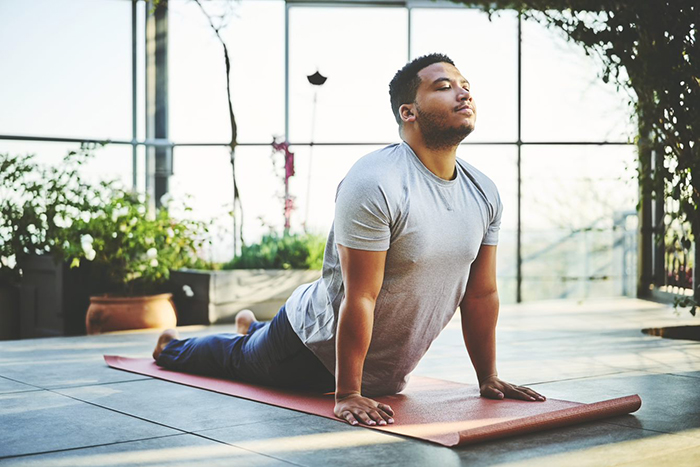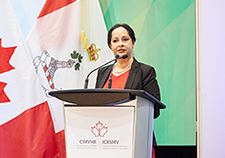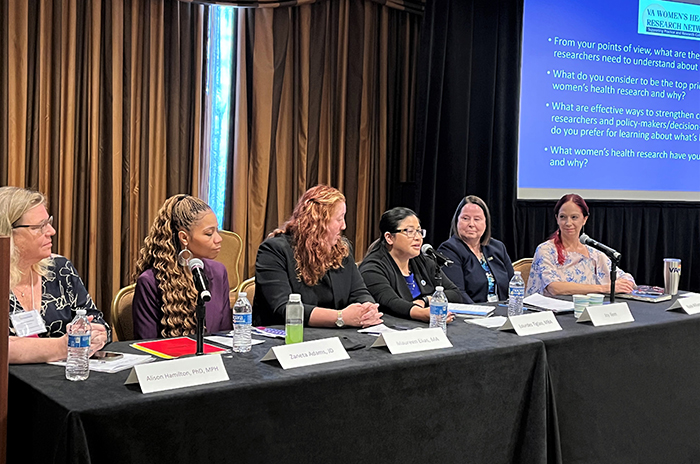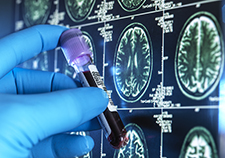Office of Research & Development |
 |


Based on preliminary evidence, researchers determined that exercise has promise for reducing the severity of PTSD symptoms in Veterans. (Photo for illustrative purposes only. © Getty Images Stígur Mar Karlsson /Heimsmyndir)
June 28, 2022
By Mike Richman
VA Research Communications
"If exercise does help Veterans with PTSD, it could make a big difference in how we treat the disorder by giving Veterans and their providers another option to use, either by itself or in combination with other treatments."
Multiple therapies can effectively treat posttraumatic stress disorder (PTSD) in Veterans. But what works for one person may not work for another, highlighting how a one-size-fits-all approach to PTSD, or mental health in general, is unlikely to be successful.
At the same time, interest is increasing among researchers and clinicians in using complementary and alternative treatments, such as exercise, to enhance traditional mental health care and support a patient-centered approach to care. Veterans with PTSD frequently use these treatments and often rate them as enjoyable.
That’s the word from Dr. Daniel Reis, a clinical psychologist at the VA Rocky Mountain Mental Illness Research Education and Clinical Center (MIRECC) for Suicide Prevention. He recently led a literature review to evaluate the results and quality of studies on the benefits of exercise for Veterans with PTSD.
In the review, the researchers identified six single-arm studies in which all participants took part in an exercise, plus three randomized controlled trials (RCTs) that compared an exercise group against another group. The Veterans in the studies were diagnosed with PTSD or had experienced PTSD symptoms but had not received a PTSD diagnosis.

Million Veteran Program director speaks at international forum

2023 VA Women's Health Research Conference

Self-harm is underrecognized in Gulf War Veterans

New VA study to determine best drug for Veterans with treatment resistant depression

Head trauma, PTSD may increase genetic variant's impact on Alzheimer's risk
Based on preliminary evidence, the researchers determined that exercise has promise for reducing the severity of PTSD symptoms in Veterans. Reis and his team saw reductions in the four primary symptom domains: re-experience, avoidance, thoughts, and arousal. The paper also highlighted the need for more high-quality RCTs to confirm the benefits of exercise for PTSD symptom reduction in Veterans. The review appeared in the Federal Practitioner in April 2022.
“The physical health benefits of exercise are well known, and there is a growing body of research showing how exercise can also support mental health, making it an ideal candidate for further investigation as a complementary treatment,” Reis says. “If exercise does help Veterans with PTSD, it could make a big difference in how we treat the disorder by giving Veterans and their providers another option to use, either by itself or in combination with other treatments.
“Finally,” he adds, “Veterans with PTSD are more likely to have hypertension, which is a leading risk factor for cardiovascular disease—the number one cause of death in the U.S.—and is responsive to exercise. As such, exercise has the potential to protect the health and well-being of Veterans by simultaneously enhancing physical and mental health.”
Understanding the complex nature of PTSD is one of VA’s most pressing challenges. The agency says many Veterans who fought in Vietnam, the Gulf War, and the post-9/11 conflicts in Iraq and Afghanistan have had that mental health condition sometime in their lives.
PTSD symptoms are well documented: reexperiencing trauma through flashbacks and nightmares; avoidance of reminders of a traumatic event; changes in thoughts and feelings, such as guilt and emotional numbing; and hyperarousal.
Reis and his colleagues embarked on the literature review to determine if exercise can successfully treat PTSD in Veterans. No previous research has synthesized the literature on the effects of exercise on PTSD in the Veteran population. The research team also evaluated the risk of bias in the studies, which is often referred to as a “quality assessment.”
The review showed that yoga was the top exercise treatment used in the studies. The yoga classes involved breathing, movement, and relaxation. “Also, many studies took a holistic or trauma-informed approach, modifying their yoga programs in ways that were considerate of Veterans’ needs and past experiences,” Reis says. “Integrated exercise programs that combine aerobic and strength-based activities, some of which included yoga, are also promising treatment candidates.”
Reis and his team used what is known as a systematic review and meta-analysis, which is a way of searching for all existing research trials and combining their results. Doing so, Reis notes, can provide a clearer sense of just how effective a treatment is for a particular disorder, as all available studies are being evaluated together. Plus, “We wanted to examine the quality of each study to determine how confident we could be that the reported results are accurate,” he says.
The six single-arm studies included 101 participants, with the researchers comparing symptom scores before and after the exercise. Five of the six studies used yoga, and one used an aerobic exercise program. The research team found that the overall risk of bias was “serious” for all six trials. That means it is highly likely that the study results indicated that exercise helped alleviate PTSD symptoms when it did not.
“We found two major problem areas with the single-arm studies,” Reis says. “The first was not accounting for pre-existing trends, in which high symptom scores on average tend to decrease on their own over time. The second was using measures of PTSD symptoms that may have been unconsciously influenced by the expectations of the participants or researchers. While we can’t know for sure if the results are biased and, if so, what direction they are biased in, such as too large or too small, a serious risk of bias rating decreases our confidence in the accuracy of the results.”
For the three RCTs, which included 217 participants, the overall risk of bias ranged from “some concerns to high risk.” The researchers rated two of the three trials as having some concern for the risk of bias, meaning “we can feel fairly confident that the results are accurate,” Reis says.
“The main problem we saw with the RCTs had to do with not accounting for missing data,” he explains. “One reason it is important to account for missing data is that people may be more likely to drop out of a treatment if it isn’t helping them. If this happens, you could end up with results showing that exercise greatly reduced PTSD symptoms, but only because everyone whose symptoms weren’t decreasing dropped out and weren’t included in the final analysis. By using appropriate analyses, you can reduce the chance that the results are biased in this way."
Another RCT was found to have a high risk of bias because of the way it measured PTSD symptoms, notes Reis. This RCT found that exercise was much less helpful in alleviating PTSD symptoms than the other two randomized trials. “Bias can shrink results, as well as inflate them,” he says.
Despite the bias that researchers spotted in the literature review, Reis says he’s confident that exercise has promise for patients with PTSD or at the least is worth more research to better evaluate its efficacy.
“I certainly wouldn’t make a conclusive statement about exercise for PTSD or say that clinicians should start recommending it specifically as a first-line option for PTSD, although exercise has noted health benefits overall that can make it a good fit for a lot of people,” he says. “But I’m optimistic that the signals we are seeing in the few studies published with Veterans, so far, are pointing in the right direction. In summary, the magnitude of effect sizes we are seeing in the two types of studies both suggest something is there, while the risk of bias introduces caution.”
In the end, randomized trials are preferred over single-arm studies, when possible, because randomization and control groups are powerful tools for eliminating bias even before the treatment takes place, Reis says. “In other words, it’s much easier to control for bias in randomized studies.”
Reis says an ideal randomized trial would compare an exercise against a control group that, for example, pursues a low-intensity activity like brief walking combined with education. The following methods should be used to control for bias:
“Importantly, all of these methods should be thoroughly described in the final report or in a supplementary file so the readers are able to determine that the risk of bias is low without needing to reach out to the authors for more details,” Reis says.
VA Research Currents archives || Sign up for VA Research updates